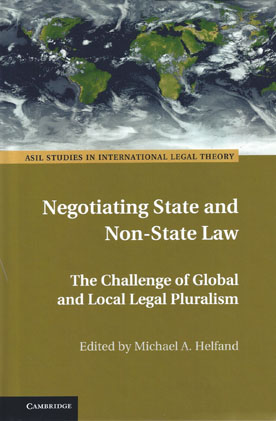
Non-state law is playing an increasing role in both public and private ordering. Numerous organizations have emerged alongside the nation-state, each purporting to provide their members with rules and norms to govern their conduct and organize their affairs.
The nation-state increasingly finds itself sandwiched, between two broad and contrasting categories of non-state law. The first - law above the state - captures legal systems that function across the territorial borders of nation-states.
The second category - law below the state - includes forms of local customary, religious, and indigenous law. As these forms of non-state law persist and proliferate alongside the nation-state, the relationship between state and non-state law becomes more complex, multifaceted, and tense.
This volume addresses this relationship considering whether and to what extent state and non-state law can coexist and how each form of law seeks to influence as well as transform the other.